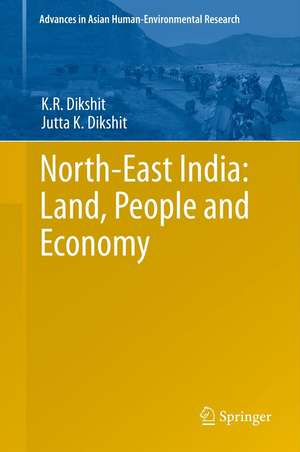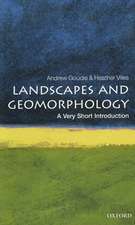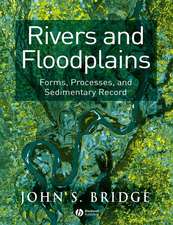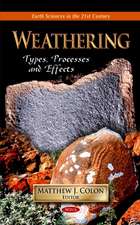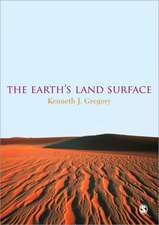North-East India: Land, People and Economy: Advances in Asian Human-Environmental Research
Autor K.R. Dikshit, Jutta K. Dikshiten Limba Engleză Hardback – 4 noi 2013
| Toate formatele și edițiile | Preț | Express |
|---|---|---|
| Paperback (1) | 1297.12 lei 6-8 săpt. | |
| SPRINGER NETHERLANDS – 23 aug 2016 | 1297.12 lei 6-8 săpt. | |
| Hardback (1) | 1575.88 lei 6-8 săpt. | |
| SPRINGER NETHERLANDS – 4 noi 2013 | 1575.88 lei 6-8 săpt. |
Din seria Advances in Asian Human-Environmental Research
- 18%
 Preț: 956.81 lei
Preț: 956.81 lei - 20%
 Preț: 560.01 lei
Preț: 560.01 lei - 18%
 Preț: 890.54 lei
Preț: 890.54 lei - 18%
 Preț: 788.72 lei
Preț: 788.72 lei - 15%
 Preț: 645.47 lei
Preț: 645.47 lei - 24%
 Preț: 725.19 lei
Preț: 725.19 lei - 18%
 Preț: 948.16 lei
Preț: 948.16 lei - 18%
 Preț: 787.78 lei
Preț: 787.78 lei - 15%
 Preț: 640.37 lei
Preț: 640.37 lei - 15%
 Preț: 646.43 lei
Preț: 646.43 lei - 15%
 Preț: 665.58 lei
Preț: 665.58 lei - 18%
 Preț: 948.16 lei
Preț: 948.16 lei - 15%
 Preț: 635.31 lei
Preț: 635.31 lei - 20%
 Preț: 578.30 lei
Preț: 578.30 lei - 15%
 Preț: 647.73 lei
Preț: 647.73 lei - 18%
 Preț: 1029.13 lei
Preț: 1029.13 lei - 15%
 Preț: 640.06 lei
Preț: 640.06 lei - 18%
 Preț: 950.52 lei
Preț: 950.52 lei - 15%
 Preț: 642.18 lei
Preț: 642.18 lei - 18%
 Preț: 896.08 lei
Preț: 896.08 lei - 15%
 Preț: 639.41 lei
Preț: 639.41 lei - 15%
 Preț: 645.28 lei
Preț: 645.28 lei - 15%
 Preț: 641.03 lei
Preț: 641.03 lei - 18%
 Preț: 954.62 lei
Preț: 954.62 lei - 15%
 Preț: 642.51 lei
Preț: 642.51 lei - 15%
 Preț: 644.95 lei
Preț: 644.95 lei - 18%
 Preț: 1023.74 lei
Preț: 1023.74 lei - 18%
 Preț: 954.31 lei
Preț: 954.31 lei - 15%
 Preț: 640.55 lei
Preț: 640.55 lei - 15%
 Preț: 644.18 lei
Preț: 644.18 lei - 15%
 Preț: 641.71 lei
Preț: 641.71 lei - 18%
 Preț: 938.21 lei
Preț: 938.21 lei - 15%
 Preț: 644.18 lei
Preț: 644.18 lei
Preț: 1575.88 lei
Preț vechi: 1921.80 lei
-18% Nou
Puncte Express: 2364
Preț estimativ în valută:
301.58€ • 327.47$ • 253.33£
301.58€ • 327.47$ • 253.33£
Carte tipărită la comandă
Livrare economică 22 aprilie-06 mai
Preluare comenzi: 021 569.72.76
Specificații
ISBN-13: 9789400770546
ISBN-10: 9400770545
Pagini: 550
Ilustrații: XLIII, 800 p. 127 illus., 65 illus. in color.
Dimensiuni: 155 x 235 x 50 mm
Greutate: 1.35 kg
Ediția:2014
Editura: SPRINGER NETHERLANDS
Colecția Springer
Seria Advances in Asian Human-Environmental Research
Locul publicării:Dordrecht, Netherlands
ISBN-10: 9400770545
Pagini: 550
Ilustrații: XLIII, 800 p. 127 illus., 65 illus. in color.
Dimensiuni: 155 x 235 x 50 mm
Greutate: 1.35 kg
Ediția:2014
Editura: SPRINGER NETHERLANDS
Colecția Springer
Seria Advances in Asian Human-Environmental Research
Locul publicării:Dordrecht, Netherlands
Public țintă
ResearchCuprins
Introduction.- Part I: Historical Outline.- North-eastern India through the Ages.- Part II: The Land.- North-East India – Structural Framework.- Physical Setting of Northeast India.- The Drainage System of Northeast India.- Weather and Climate of the North-East.- Natural Hazards in the Northeast Region.- The Resource Endowment of the North-Eastern Region.- Forest and Grasslands of the North-East Region.- Part III:The People.- Early Colonisation of Northeast India.- People of the North-East.- Population of the North-eastern States.- Migration and its Impact on the Society and the Economy of the North-East.- Human Habitat in the North-East India.-Urbanisation and Urban Landscape in North-East India.- Part IV: The Economy.- Agriculture: Past and Present.- Industries and Associated Economic Activities.- Transport and Trade in Northeast India.- Socio-Economic Development of the North-East: An Assessment.- Part V: The Future.- Epilogue.
Recenzii
From the reviews:
“The authors originally intended this volume to be a text for college students to introduce them to research on Northeast India. … It also contains a wealth of statistical data on population, linguistics, migration, ecology, agriculture, and industry. Useful as a college text and as a valuable reference tool for researchers of Northeast India. Summing Up: Recommended. Upper-division undergraduates and above.” (P. P. Barua, Choice, Vol. 51 (10), June, 2014)
“The authors originally intended this volume to be a text for college students to introduce them to research on Northeast India. … It also contains a wealth of statistical data on population, linguistics, migration, ecology, agriculture, and industry. Useful as a college text and as a valuable reference tool for researchers of Northeast India. Summing Up: Recommended. Upper-division undergraduates and above.” (P. P. Barua, Choice, Vol. 51 (10), June, 2014)
Notă biografică
Prof. Dr. Kamal Ramprit Dikshit is a former Professor of Geography of the University of Pune, India (now retired). He has written several books, such as "Geography of Gujarat" (1970), "Contributions to Indian Geography: Geomorphology" (1983), "Maharashtra in Maps" (1986) and "Environment, Forest Ecology and Man in the Western Ghats: The Case of Mahabaleshwar Plateau" (1993) as well as many research papers.
Jutta K. Dikshit has been teaching geography at the Department of Geography, University of Pune, Pune. She studied geography and German language and literature at the Johannes Gutenberg University, Mainz (Germany), and obtained her doctoral degree from the Sorbonne, Paris. Before coming to India, she worked as a lecturer at the University of Saarbrücken for a number of years. Her research papers are mainly in the field of physical geography. She is the editor of the book "The Urban Fringe of Indian Cities" (2011).
Jutta K. Dikshit has been teaching geography at the Department of Geography, University of Pune, Pune. She studied geography and German language and literature at the Johannes Gutenberg University, Mainz (Germany), and obtained her doctoral degree from the Sorbonne, Paris. Before coming to India, she worked as a lecturer at the University of Saarbrücken for a number of years. Her research papers are mainly in the field of physical geography. She is the editor of the book "The Urban Fringe of Indian Cities" (2011).
Textul de pe ultima copertă
North-East India, comprising the seven contiguous states around Assam, the principal state of the region, is a relatively unknown, yet very fascinating region. The forest clad peripheral mountains, home to indigenous peoples like the Nagas, Mizos and the Khasis, the densely populated Brahmaputra valley with its lush green tea gardens and the golden rice fields, the moderately populated hill regions and plateaus, and the sparsely inhabited Himalayas, form a unique mosaic of natural and cultural landscapes and human interactions, with unparalleled diversity.
The book provides a glimpse into the region’s past and gives a comprehensive picture of its physical environment, people, resources and its economy. The physical environment takes into account not only the structural base of the region, its physical characteristics, and natural vegetation but also offers an impression of the region’s biodiversity and the measures undertaken to preserve it. The people of the region, especially the indigenous population, inhabiting contrasting environments and speaking a variety of regional and local dialects, have received special attention, bringing into focus the role of migration that has influenced the traditional societies, for centuries. The book acquaints the readers with spatial distribution, life style and culture of the indigenous people, outlining the unique features of each tribe. The economy of the region, depending originally on primitive farming and cottage industries, like silkworm rearing, but now greatly transformed with the emergence of modern industries, power resources and expanding trade, is reviewed based on authentic data and actual field observations. The epilogue, the last chapter in the book, summarizes the authors’ perception of the region and itsfuture.
The book provides a glimpse into the region’s past and gives a comprehensive picture of its physical environment, people, resources and its economy. The physical environment takes into account not only the structural base of the region, its physical characteristics, and natural vegetation but also offers an impression of the region’s biodiversity and the measures undertaken to preserve it. The people of the region, especially the indigenous population, inhabiting contrasting environments and speaking a variety of regional and local dialects, have received special attention, bringing into focus the role of migration that has influenced the traditional societies, for centuries. The book acquaints the readers with spatial distribution, life style and culture of the indigenous people, outlining the unique features of each tribe. The economy of the region, depending originally on primitive farming and cottage industries, like silkworm rearing, but now greatly transformed with the emergence of modern industries, power resources and expanding trade, is reviewed based on authentic data and actual field observations. The epilogue, the last chapter in the book, summarizes the authors’ perception of the region and itsfuture.
Caracteristici
Delivers a comprehensive account of the physical environment of North-East India, its people, resources and economy Offers an extensive look at the process of colonisation by early settlers, their transformation, the arrival of different ethnic groups and the evolution of the contemporary society Treats all aspects of the economy of the region: agriculture, land use, mineral industry, transport and trade
